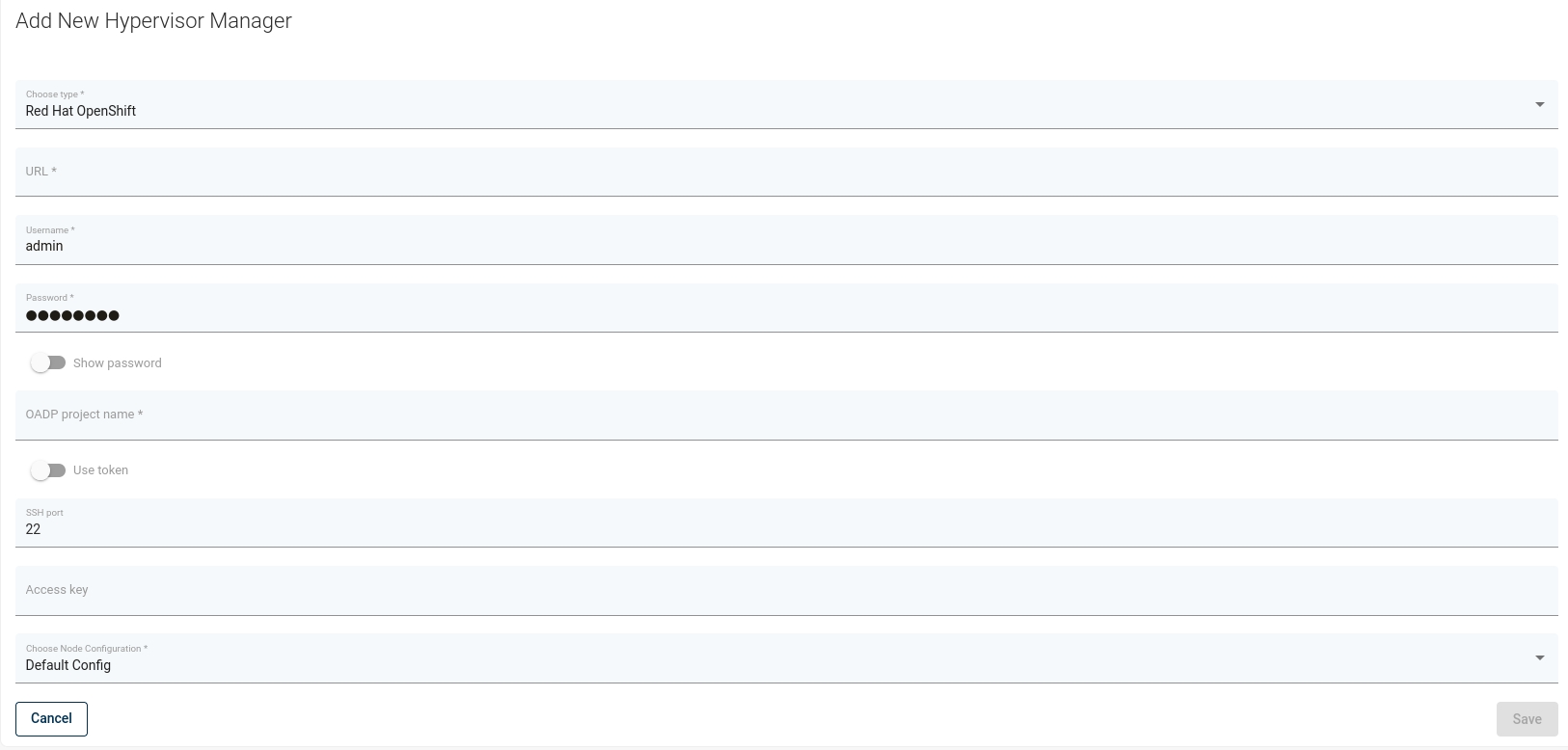Red Hat OpenShift
vPlus supports backup for OpenShift using OADP in backup process.
Adding Openshift Hypervisor Manager
Log in to the web interface and add a new OpenShift Hypervisor Manager:

The Openshift Nodes should appear in vPlus after indexing the cluster.
Persistent volumes restore/backup
There are two ways of restoring the volume content.
The user should deploy an automatic provisioner which will create persistent volumes dynamically. For details, see NFS Server Provisioner.
The user should manually create a pool of volumes. vPlus will pick one of the available volumes to restore the content.
OpenShift troubleshooting
The user from the current context should have cluster-admin permissions.
oc adm policy add-cluster-role-to-user cluster-admin admin --as system:admin
In this case, you should stay logged in as admin for the connection to be successful.
If indexing/export fails because no Pods could be found, please make sure they have the app label assigned appropriately.
Red Hat Openshift Virtualization
vPlus since version 6.0.0 supports backup of OpenShift Virtual Machines.
Red Hat OpenShift Virtualization is a feature of Red Hat OpenShift that allows you to run and manage virtual machine (VM) and container workloads side by side. vPlus can inventory Virtual Machines and treat them as any other instance. They can be easily protected and recovered.
Metadata of Virtual Machines is exported using OADP operator, volume data is exported using side pod using custom OpenShift Virtualization Plugin docker image. Backup supports both full and incremental. Incremental backup use calculated checksums and does not require previous snapshots to remain in OpenShift.
Using own image registry
vPlus use quay.io as default image registry for OpenShift Virtualization Plugin docker image. You can use your own registry to store the plugin image.
Download OpenShift Virtualization Plugin from the repository.
Upload it to your image registry host.
Import image to your registry. Example:
Edit
/opt/vprotect/node.propertiesfile and change value foropenshift.virtualization.sidepod.imageparameter. Example:Restart vprotect-node service.
Limitations
Currently, we only support backups of Deployments/DeploymentConfigs/StatefulSets (persistent volumes and metadata).
All deployment pods will be paused during the backup operation - this is required to achieve consistent backup data.
For a successful backup, every object used by the Deployment/DeploymentConfig/StatefulSet should have a
applabel assigned appropriately.Openshift Virtualization - Hot-plugged disks are not supported.